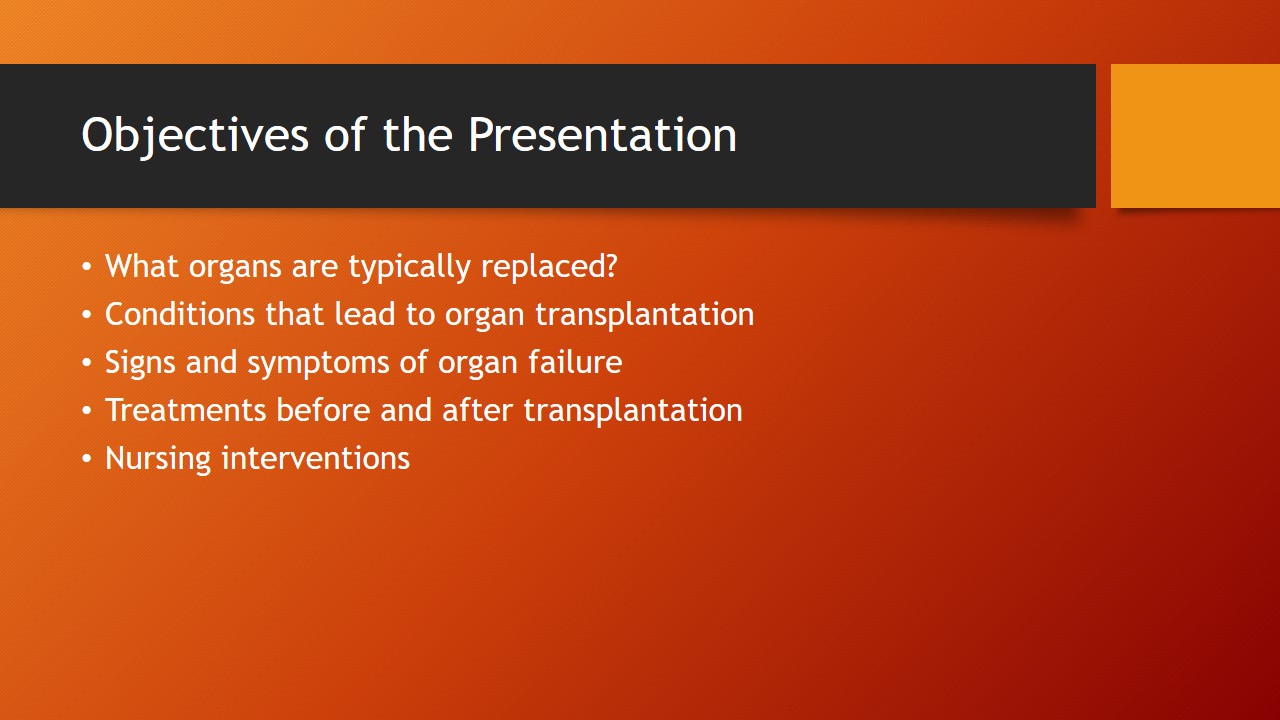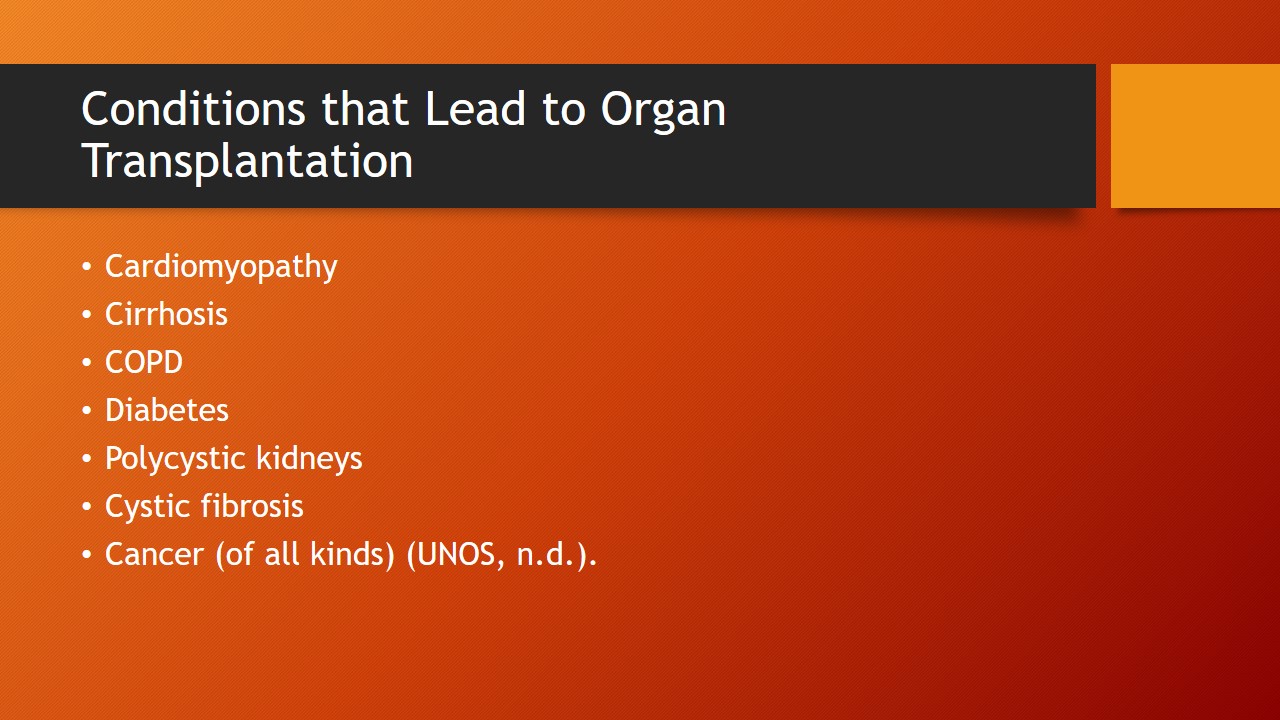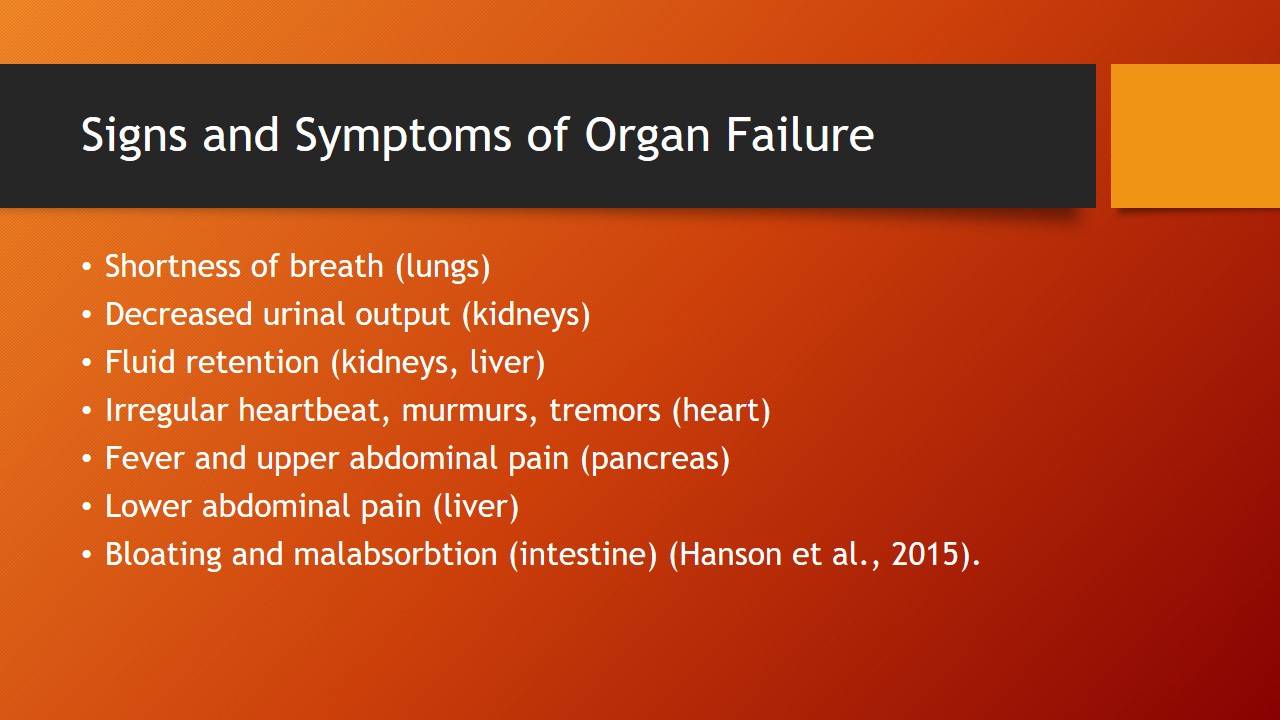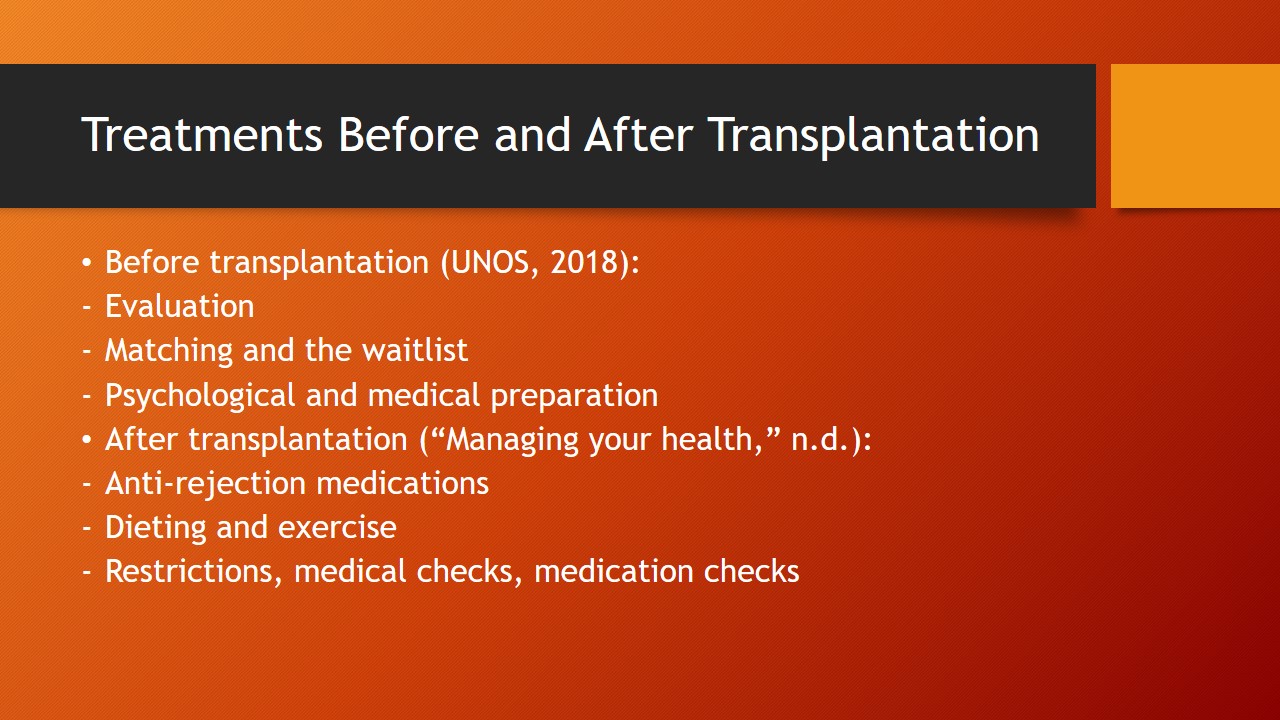Introduction
- Organ transplantation is a very unique type of operation;
- Involves the transplantation of organs of living or deceased donors;
- Patients outnumber donors;
- Over 120,000 patients in the US alone need organ transplants (Pillay et al., 2014).
Organ transplantation is an operation that involves transplanting a vital or essential organ from a living or a recently-deceased person to a patient in need. It is a very difficult operation that involves significant risks for both donors and patients, as there are chances of the body rejecting the organ. Because of the costs and extreme scarcity of organ transplants, the operation is suggested as a last resort only. The demand for organs outpaces the supply by a large margin, and there are 120,000 patients in the US alone waiting for an organ transplant (Pillay et al., 2014). The purpose of this presentation is to provide an overview of organ transplantation.

Objectives of the Presentation
- What organs are typically replaced?
- Conditions that lead to organ transplantation.
- Signs and symptoms of organ failure.
- Treatments before and after transplantation.
- Nursing interventions.
By the end of this presentations, the students would be provided with information about organ transplantation. The review will outline the organs that are commonly being transplanted, cite the various conditions that lead to organ transplantation as well as the common signs and symptoms of organ failure, and elaborate on how the patients are treated before and after the operation. Next, several nursing interventions aimed at improving success rates of the transplantation would be discussed.

Organs Typically Replaced
- Heart – life-support organ;
- Intestine – essential organ;
- Kidney – essential organ;
- Liver – life-support organ;
- Lung – life-support organ;
- Pancreas – essential organ (UNOS, 2018).
The main organs typically involved in transplantation can be divided into two groups (UNOS, 2018):
- Essential organs;
- Life support organs.
The difference between them lies in the urgency of replacement. A person with a failing kidney can survive on one kidney alone for a period of time. A person experiencing a heart failure could die within 10 minutes after the cardiac arrest. Heart, lungs, and liver belong to life support organs, whereas the intestine, pancreas, and kidneys are considered essential organs for proper body functioning. Other organs may not be eligible to transplantation due to various complications associated with the operation. The brain, for obvious reasons, cannot be transplanted. Tissue transplantation, on the other hand, is much cheaper and safer, but does not offer a definitive solution.

Conditions that Lead to Organ Transplantation
- Cardiomyopathy;
- Cirrhosis;
- COPD;
- Diabetes;
- Polycystic kidneys;
- Cystic fibrosis;
- Cancer (of all kinds) (UNOS, n.d.).
The most common diseases that lead to organ transplantation are those that have the potential to damage and leave the organs unusable. These diseases include cardiomyopathy (affects the heart’s muscles and its ability to pump blood), cirrhosis (scarring of the liver due to various comorbidities), COPD (affects the airways and air sacks within lungs), diabetes (affects pancreas and organs that require insulin), polycystic kidneys (cysts interfere with kidney functions), and cystic fibrosis (affects respiratory systems, stomach, kidneys, and pancreas) (UNOS, n.d.). Cancer can affect any organ in the body, and at later stages may require removal to prevent the disease from spreading.

Signs and Symptoms of Organ Failure
- Shortness of breath (lungs);
- Decreased urinal output (kidneys);
- Fluid retention (kidneys, liver);
- Irregular heartbeat, murmurs, tremors (heart);
- Fever and upper abdominal pain (pancreas);
- Lower abdominal pain (liver);
- Bloating and malabsorbtion (intestine) (Hanson et al., 2015).
There are numerous symptoms that may indicate potential organ failure. Typically, the symptoms are directly associated with the function the organ plays in the body (Hanson et al., 2015). If lungs are malfunctioning to the point of suffering a failure, the person will experience chest pains and a shortness of breath. Irregular heartbeat rate, low blood pressure, and associated symptoms can indicate that the heart is about to give up. However, these symptoms are also common in many other diseases, making it difficult to predict a potential organ failure. For example, bloating and malabsorbtion, which are among the first symptoms of intestinal failure, are also associated with diarrhea (Hanson et al., 2015).

Treatments Before and After Transplantation
- Before transplantation (UNOS, 2018):
- Evaluation;
- Matching and the waitlist;
- Psychological and medical preparation.
- After transplantation (“Managing your health,” n.d.):
- Anti-rejection medications;
- Dieting and exercise;
- Restrictions, medical checks, medication checks.
Medical preparations before the transplantation include evaluation and compatibility with potential donors as well as psychological and medical procedures to prepare the customer for the procedure. Some transplants, especially heart transplant, are very taxing on the body, meaning that some patients might not even survive the operation (UNOS, 2018). Realizing the risks and maintaining a healthy way of life prior to the procedure are important parts of the preparation. After the operation is successful, the patient is required to take anti-rejection medications, maintain a healthy way of life to prevent any complications, and report frequently to the doctor’s office, in order to spot any possible signs of organ rejection (“Managing your health,” n.d.). Patient agency is an important factor in healthcare, as the doctors cannot supervise the patient at all times once he or she had left the facility.

Nursing Interventions
- Educational: Teach the patients about medication management (Hanson et al., 2015).
- Psychological: Help cope with the aftermath of the operation (Pillay et al., 2014).
- Surgical: Help reduce the negative consequences of transplantation (Frost et al., 2016).
Typically, patients are taught about the consequences of living with a transplant before and after the operation, before they are discharged from the hospital. Hanson et al. (2015) state that patient education and periodical reminders are crucial in decreasing organ rejection rates because of poor medication intake. Pillay et al. (2014) have found that transplant patients are in need of psychological interventions to reduce the chances of depression, stress, and anxiety associated with the treatment. Lastly, the use of chlorhexidine pre-wash has been proven to reduce operational infection rates (Frost et al., 2016). Promoting these measures would help improve the quality of care in transplant patients and increase the quality of life in the long-term perspective.

Conclusions
- Organ transplantation is an expensive and dangerous operation.
- Many diseases can cause partial or complete organ failure.
- Nursing interventions can improve coping and success rates.
- Advocacy and information campaigns are important.
Until humanity masters the technology of organ regrowth, organ donation will remain to be the primary source for transplantation. The possibility for rejection and the shrinking number of available organs remain the primary causes for why this operation is a rarely-available option. By helping to prepare the patients to the consequences of the procedure as well as perfecting and refining the surgical standards in any particular hospital, nurses can improve patient outcomes in the long run. Informing the medical specialists and the general population about the importance of the procedure and the thousands of lives that could be saved can improve donor numbers and contribute to growing the organ bank.

References
Frost, S. A., Alogso, M.-C., Metcalfe, L., Lynch, J. M., Hunt, L., Sanghavi, R., … Hillman, K. M. (2016). Chlorhexidine bathing and health care-associated infections among adult intensive care patients: A systematic review and meta-analysis. Critical Care, 20(1), 1-6.
Hanson, C. S., Chadban, S. J., Chapman, J. R., Craig, J. C., Wong, G., Ralph, A. F., & Tong, A. (2015). The expectations and attitudes of patients with chronic kidney disease toward living kidney donor transplantation: A thematic synthesis of qualitative studies. Transplantation, 99(3), 540-554.
Managing your health after organ transplant. (n.d.). Web.
Pillay, B., Lee, S. J., Katona, L., De Bono, S., Burney, S., & Avery, S. (2014). A prospective study of the relationship between sense of coherence, depression, anxiety, and quality of life of haematopoietic stem cell transplant patients over time. Psycho-Oncology, 24(2), 220-227.
UNOS. (n.d.). Diseases. Web.
UNOS. (2018). Before the transplant. Web.